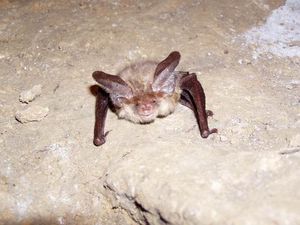 Interest in active tourism is growing every year. Tourists go on excursions, explore historical sites, and visit the birthplaces of famous writers and painters. Among the various types of active tourism, speleotourism is confidently taking a leading position.
Interest in active tourism is growing every year. Tourists go on excursions, explore historical sites, and visit the birthplaces of famous writers and painters. Among the various types of active tourism, speleotourism is confidently taking a leading position.
More and more people visit caves for educational purposes. And in caves equipped with special gear, visitors can also try overcoming various obstacles—grottoes, pits, and more.
Marble Cave
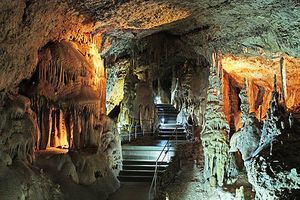 This is one of the youngest caves in the Crimean Mountains, discovered only in 1987 and initially set up for tourist excursions. After scientific studies, concrete pathways, lights, and railings were installed inside and opened to tourists in April 1989.
This is one of the youngest caves in the Crimean Mountains, discovered only in 1987 and initially set up for tourist excursions. After scientific studies, concrete pathways, lights, and railings were installed inside and opened to tourists in April 1989.
The Simferopol Speleological Club took the cave under its protection to safeguard the magnificent stalactite formations from vandalism.
The length of the first tour route was initially only 180 meters twenty-four years ago, but now the total length of the cave passages exceeds two kilometers.
In terms of length and area, Marble Cave ranks first among Crimean caves. Its name is associated with marble-like limestone rocks in which the cave is located.
The Marble Cave (known as “Marmurova Pechera” in Ukrainian) consists of three main sections: the Main Gallery (725 meters long), the Lower Gallery (960 meters long, where future excursions with speleological gear are planned), and the Tiger Pass (a side cave branch 390 meters long).
A hang glider with a motor is often referred to as a motorized hang glider . Learn more about this type of aircraft in our article.
How does a compass work, and what is an azimuth? Find answers to all your questions in this article .
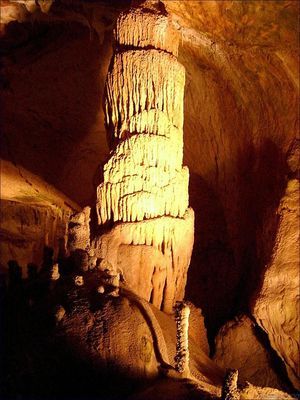 Through a ten-meter-wide entrance, tourists enter the Gallery of Fairy Tales. Walking along the tour pathways, they pass by intricate stalactites, flowstone draperies, and stalagmites reminiscent of fairy-tale characters. The first to greet visitors is the Guardian of the Cave—a massive white sculpture-like stalagmite of curious shape. Speleologists warn that disrespectful behavior might “offend” the Guardian of the Cave, advising visitors to act respectfully.
Through a ten-meter-wide entrance, tourists enter the Gallery of Fairy Tales. Walking along the tour pathways, they pass by intricate stalactites, flowstone draperies, and stalagmites reminiscent of fairy-tale characters. The first to greet visitors is the Guardian of the Cave—a massive white sculpture-like stalagmite of curious shape. Speleologists warn that disrespectful behavior might “offend” the Guardian of the Cave, advising visitors to act respectfully.
As you proceed deeper into the cave, the ceiling lowers, and tourists can marvel at hundreds of stalactites, stone waterfalls, and helictite-like “flowers.”
A side branch of the cave, called the Tiger Pass, got its name due to the predator remains found there. Initially, it was assumed to be the skeleton of a saber-toothed tiger, but later it turned out to be the remnants of a cave lion. Since the name of the gallery had already been included in guides, it was left unchanged.
Since 2006, the Lower Gallery of the cave has also been equipped for touring.
The Lower Gallery tour begins with the Collapse Hall. This is the largest hall in Crimean caves, with a height of 28 meters and a length of over 100 meters. Its walls are adorned with coral-like “flowers,” delicate stalactite columns, and gigantic boulders that amaze the imagination.
The Marble Cave is among the five most beautiful caves in the world, and it was admitted into the International Association of Show Caves in 1992. Over 100,000 people per year currently visit the cave, a number that continues to grow.
Ignatiev Cave
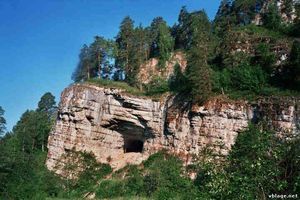 If the Marble Cave is one of the youngest caves in the world, then Ignatiev Cave can be considered one of the oldest. The first mentions of the cave appeared in a book from the second half of the 18th century. Perhaps due to its impressive age, several names for the cave are found in literary sources: Faraway Cave, Yamazy-Tash, Serpievskaya, and Ignat’s Cave.
If the Marble Cave is one of the youngest caves in the world, then Ignatiev Cave can be considered one of the oldest. The first mentions of the cave appeared in a book from the second half of the 18th century. Perhaps due to its impressive age, several names for the cave are found in literary sources: Faraway Cave, Yamazy-Tash, Serpievskaya, and Ignat’s Cave.
Ignatiev Cave is famous not just for the abundance of its names but for being the most “academic” cave. Over two centuries, it has been studied and described in the scientific works of academicians and Ph.D. experts from around the world. Poems, songs, and films have all been dedicated to this cave. The number of scientific papers, magazine articles, and books written about it exceeds a hundred.
Located in the southern part of the Ural Mountains, on the banks of the Sim River, this unique tourist site has a rich history.
The modern name of the cave comes from hermit Ignatius, who lived there in the 19th century.
Many legends surround this hermit. According to one legend, the hermit was Emperor Alexander I; another claims it was the brother of Emperors Alexander I and Nicholas I, Prince Constantine Pavlovich. A third legend tells of a wondrous but tragic love story involving a young artist. The most famous cave is renowned not only for its legends but also for its gallery of paintings. In 1980, archaeologists discovered ancient drawings of primitive humans on the walls and ceilings in the farthest part of the cave. These are very ancient images, dating back 14,000 years. The cave walls display depictions of animals and various symbols.
The Sheregesh webcam online broadcasts everything happening there 24/7. You can check the weather and slope conditions anytime.
Learn how to properly choose a sleeping bag for camping or extreme tourism with this article on our website.
Fear of heights versus acrophobia – what’s the difference and where do they intersect? Read here .
The Ignatievskaya Cave consists of four sections - Entrance Grotto, Main Corridor, Grand Hall, and Far Hall.
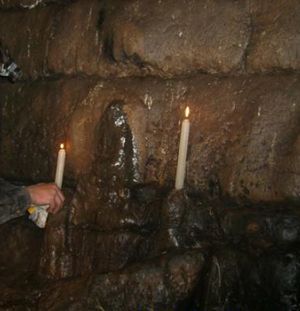 The Cell of Elder Ignatius – the farthest grotto from the entrance, which can only be accessed through a narrow passage. In this part of the cave, there’s a flowstone formation resembling a female figure, referred to as the icon of the Virgin Mary.
The Cell of Elder Ignatius – the farthest grotto from the entrance, which can only be accessed through a narrow passage. In this part of the cave, there’s a flowstone formation resembling a female figure, referred to as the icon of the Virgin Mary.
The Grand Hall is considered the most beautiful; its ceiling reaches a height of eight meters. Unlike the tourist paths in Marble Cave, visitors to Ignatievskaya Cave must crouch as they travel from the Entrance Grotto to the Main Corridor. Those wanting to reach the Far Hall have two choices: crawl through the Low Passage or climb a ladder into a narrow opening 4.5 meters above the ground.
The cave passages have a total length of 545 meters.
Interest in Ignatievskaya Cave remains strong among tourists and archaeologists. In 2010, President V. Putin promised to address the issue of granting Ignatievskaya Cave the status of a state nature reserve.
Shulgan-Tash or Kapova Cave
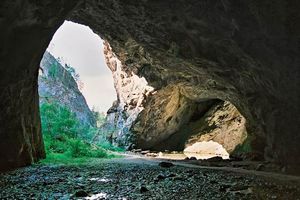 Another no less famous cave in the Urals, rich in prehistoric paintings, is the Kapova or Shulgan-Tash Cave. This karst cave is located in the Shulgan-Tash Reserve in Bashkortostan.
Another no less famous cave in the Urals, rich in prehistoric paintings, is the Kapova or Shulgan-Tash Cave. This karst cave is located in the Shulgan-Tash Reserve in Bashkortostan.
There are several theories regarding the cave’s name. The first suggests it derives from the characteristic sound of dripping water. The second posits that it comes from the word “kapishche” (shrine). Archaeologists discovered human skulls in the cave, leading scientists to hypothesize that the cave was a burial site for leaders and shamans and served as a sanctuary for rituals.
The cave’s second name, Shulgan-Tash, is Bashkir. “Tash” translates to “stone” in Bashkir, while “Shulgan” means “disappeared.” Shulgan is the name of the river flowing from the cave. There’s also a connection with the Bashkir epic, where Shulgan is the lord of the underground world.
The cave entrance always impresses tourists with its size – a huge arch about 20 meters high and 40 meters wide.
The cave stretches almost three kilometers and consists of three levels. Inside, there are massive halls, underground lakes, the Underground Shulgan River (which formed the cave), galleries, and corridors. Visitors can also see a unique stalagmite with a base about eight meters wide and a height of three meters.
Access to the second level is only possible through a high vertical shaft. It’s on the upper levels of the cave that prehistoric drawings are found.
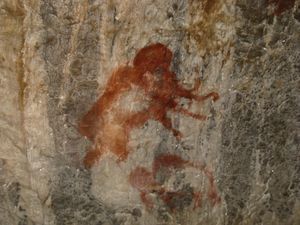 In 1954, zoologist Ryumin discovered ancient drawings whose sizes are astonishing – from 44 to 112 centimeters. About 200 drawings have been found, but only around thirty are well-preserved.
In 1954, zoologist Ryumin discovered ancient drawings whose sizes are astonishing – from 44 to 112 centimeters. About 200 drawings have been found, but only around thirty are well-preserved.
The age of the cave paintings, made with ochre and charcoal, is about 14,000 years old. As in Ignatievskaya Cave, the ceilings of Kapova Cave depict animals such as mammoths and horses and show images of huts and ladders. Unfortunately, some drawings are hidden beneath calcite deposits, or have been ruined by graffiti from tourists. Others have been irreversibly washed away by moisture running down the walls. For this reason, tourists are not allowed deep into the cave, and replicas of the drawings are displayed at the entrance. In February 2012, unrestricted access to Kapova Cave was closed. Reserve staff developed a virtual photo tour of the cave, and since July 2012, an interactive kiosk has operated in the museum.
Kapova Cave remains the most famous tourist attraction in Bashkiria. However, there are several other caves nearby that are worth exploring for both casual tourists and professional speleologists.
Moscow climbing walls invite everyone to try rock climbing. For young climbers, there are specific children’s climbing walls .
The best aviation-themed films have been curated for you on this page .
A List of Other Caves in Bashkortostan
- Sumgan
- Pobeda (Victory)
- Oktyabrskaya
- Muradym Caves
- Helicopter Cave
- Askin Cave
- Ishcheev Cave
- Idrisov Cave
- Bolshaya Kurmanayevskaya
- Kyzyl-Yarovsky Cave (G.A. Maksimovich’s Cave)
- The Lost Pit
- Salavat Yulaev’s Shelter
- Yakshingulov Cave
